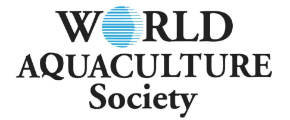THE STATUS OF CALIFORNIA YELLOWTAIL Seriola dorsalis A COMMERCIALLY READY SPECIES FOR MARINE U.S. AQUACULTURE
California Yellowtail (CYT; Seriola dorsalis, formerly Seriola lalandi) is considered a highly desirable species of marine finfish within the United States seafood market. With a range from the Southern Baja peninsula to Point Conception, California, CYT is the only Seriola species native to California waters. Commonly marketed as hiramasa, CYT is considered a promising candidate for marine aquaculture in California and has been reared on an experimental level since 2001, with commercial farming beginning in Mexico circa 2014. Currently, there is an ongoing effort to permit a commercial-scale cage farm in the federal waters off the San Diego coastline.
Historically, fingerling supply has been a critical limiting factor in the commercial production of CYT. But more recently, methods leading to successful commercial-scale Seriola spp. fingerling production have been refined and the aquaculture industry can now count on a consistent supply of high-quality juveniles. Broodstock maturation and egg production can be accomplished without hormone therapy and fish will produce eggs for approximately six months of the year when ambient water temperatures are between 15 and 24° C. Larval culture of the species includes both rotifers and Artemia as live prey, along with the addition of greenwater during the rotifer phase. Larval survival to 1 gram juveniles (at ~45 dph) is typically very high (30-60% from egg), however, issues with swim bladder inflation and other skeletal malformations can reduced the functional yield (post-grading) to 10-30%. Juvenile growout to market size has been done on a very limited basis in flow through tanks. Depending on the desired market size, it can take between 8-24 months to reach average weights of 0.5 kg to 4.0 kg, respectively. Among the known disease agents affecting CYT are ectoparasites including Benedenia sp., Zeuxapta sp., Trichodina sp., Uronema sp. and Cryptocaryon sp.; endoparasites including Anisakis sp.; and bacterial agents including Pseudomonas sp. and members of the family Vibrionaceae.
While culture of this species is technologically feasible, research and development still needs to be done in certain areas in order to optimize commercial readiness. These areas include: improved swim bladder inflation during larviculture, improved nutrition across all life stages, selective breeding to improve growth rates; developing methods for disease prevention, diagnosis and control. Most notable is the need for growout capacity both in sea-cages and land-based systems.













